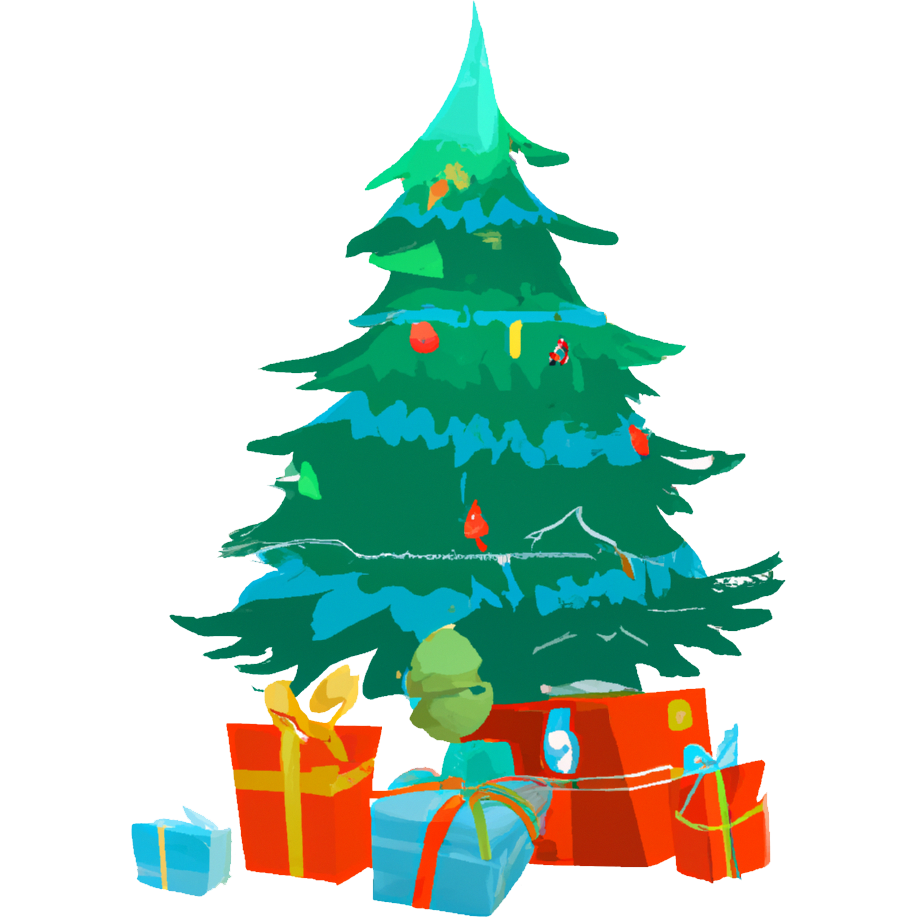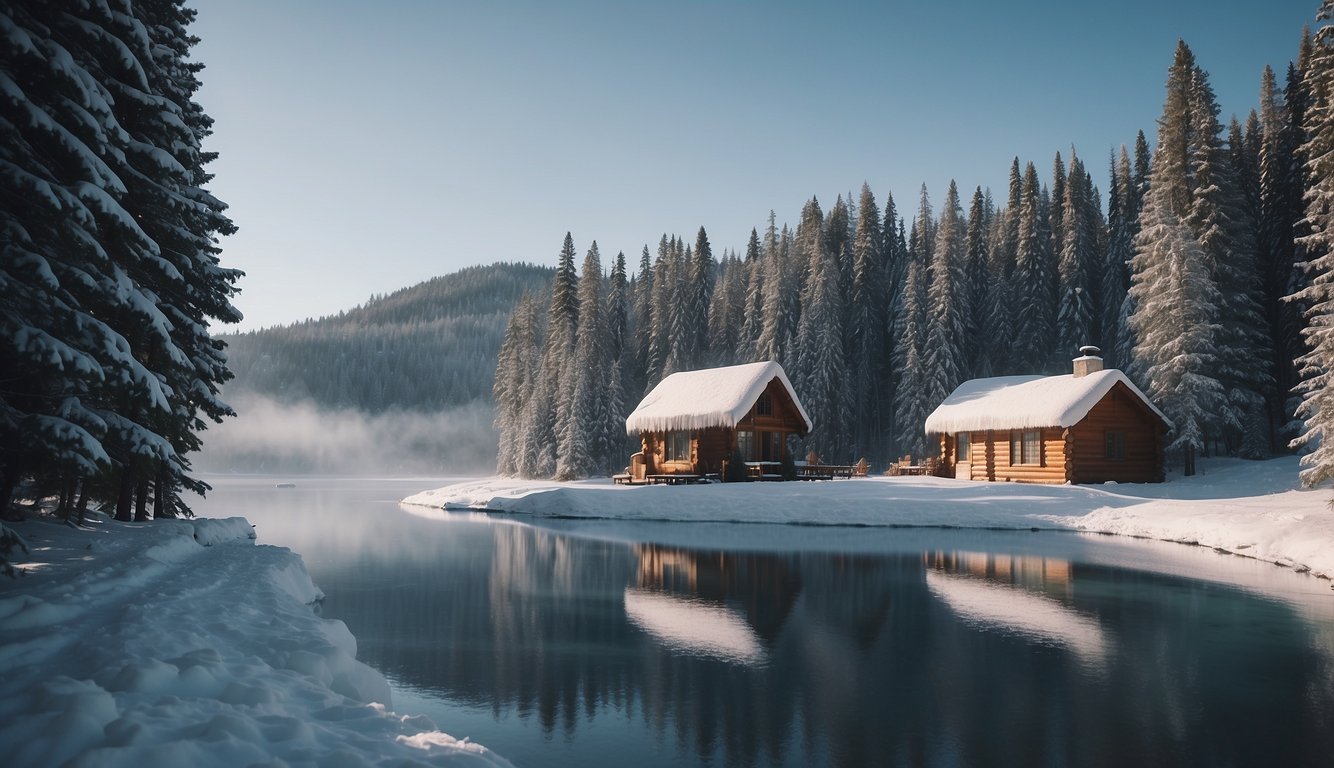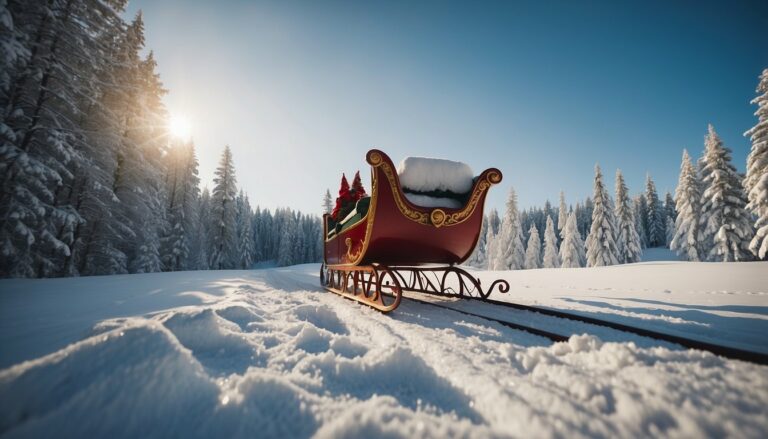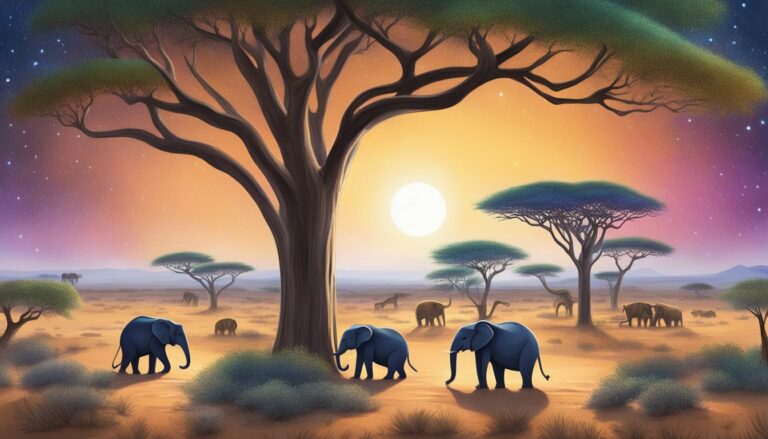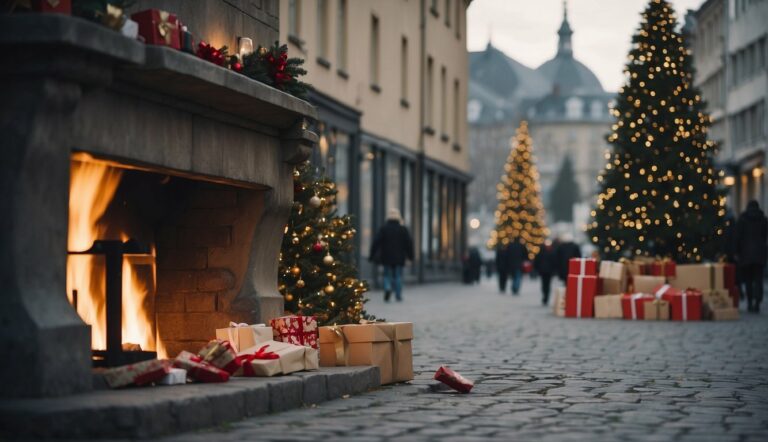Exploring Canadian Christmas Traditions and Customs: A Festive Guide to Christmas in Canada
Christmas in Canada echoes the diversity and cultural richness of the country, blending traditions from various heritages into its own unique celebration.
December 25 is recognized as the official holiday, with Canadians often participating in festivities starting the afternoon of December 24, known as Christmas Eve, and continuing through to Boxing Day on December 26.
Canadians celebrate Christmas largely similar to other western countries, reflecting the shared customs of gift-giving, decorating Christmas trees, and enjoying festive meals.
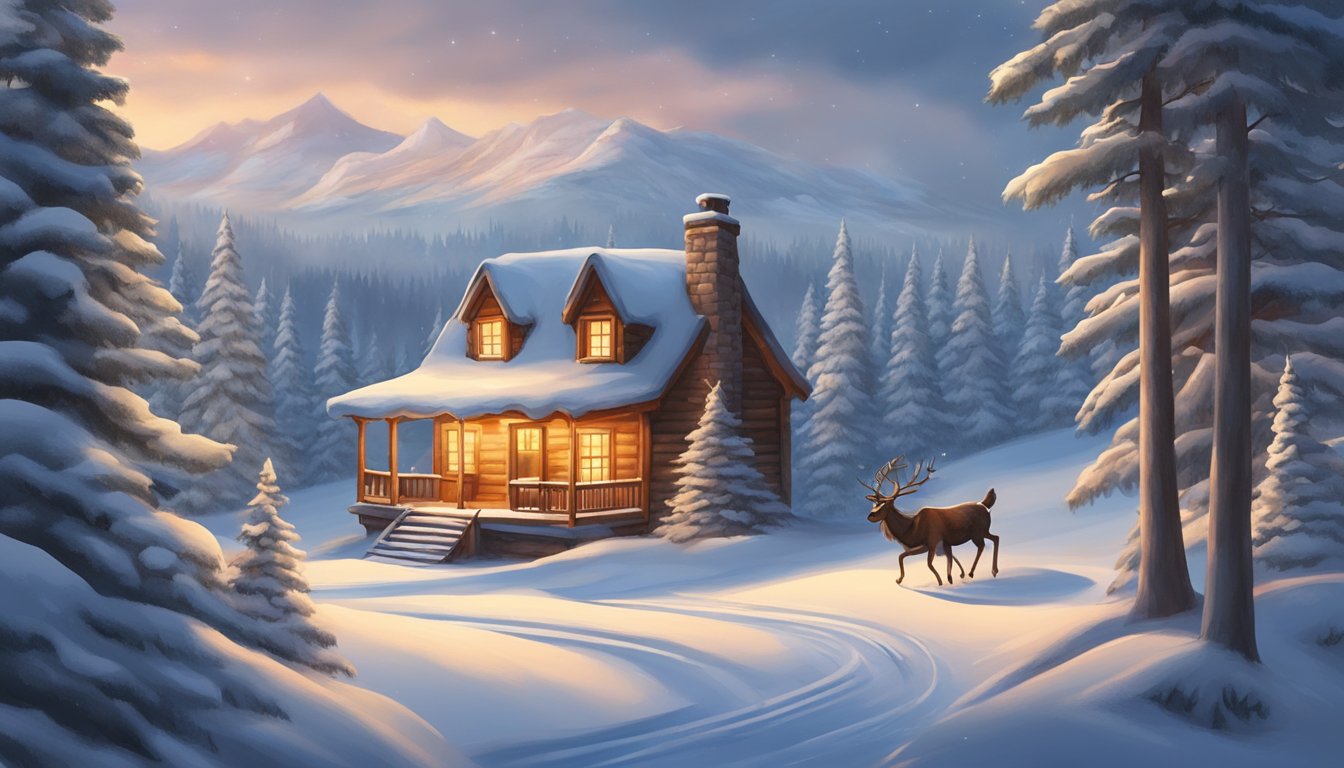
Christmas incorporates elements from many other countries, including French, English, Irish, Scottish, German, Norwegian, Ukrainian, and Indigenous cultures throughout Canada’s provinces and territories.
Each community adds its distinctive flavour to the holiday season, from the lighting of vibrant holiday markets to the cheerful parades featuring Santa Claus.
In addition to national customs, many Canadians enjoy outdoor activities such as skiing, skating, and tobogganing, taking advantage of the country’s winter landscape.
The preparation for Christmas is a blend of the solemn and the celebratory, with Canadians sending holiday cards, setting up festive decorations, and participating in religious services.
These practices have evolved over time, creating a Christmas experience that is as varied as Canada itself.
The holiday spirit permeates the country, with cities and small towns embracing the season of cheer, reflection, and community.
Historical Background of Christmas in Canada

Christmas in Canada is a vibrant and multicultural celebration, reflecting the country’s rich tapestry of traditions.
Drawing from its colonial heritage, Canadian Christmas customs are primarily rooted in French and British influences.
Early French settlers introduced “Le Réveillon,” a long dinner held on Christmas Eve, while the British brought the concept of Christmas trees and carolling.
French Settlers: Enthusiastically celebrated the holiday with feasts and religious observances, integrating practices from their homeland.
British and German Influences: The first official Christmas tree in North America is said to have been erected on December 24, 1781, in Sorel, Quebec, by the Baroness Riedesel, indicative of both British and German practices.
In the province of Newfoundland and Labrador, a unique practice known as mummering involves disguising oneself and visiting neighbours’ homes for festive frolics, a tradition with Irish and English roots.
Nova Scotia, known for its Scottish heritage, adds a touch of Gaelic flavour to the holiday season.
Statistics Canada notes the evolving nature of the holiday as communities from different cultural backgrounds contribute their customs.
Norwegian, Ukrainian, Scottish, and Irish settlers have all infused Christmas with traditions from their homelands, from ornate decorations to specialized cuisine.
The Halifax Explosion on December 6, 1917, led to a strong bond with Boston, commemorated by a giant Christmas tree sent to Boston each year from Nova Scotia as a gesture of ongoing thanks.
Given Canada’s multicultural society, these traditions have merged into a unique and all-encompassing holiday celebration.
The resulting blend is symbolic of Canada’s cultural mosaic, ensuring that Christmas is a time of heritage remembrance and inclusive festivity.
Regional Christmas Celebrations
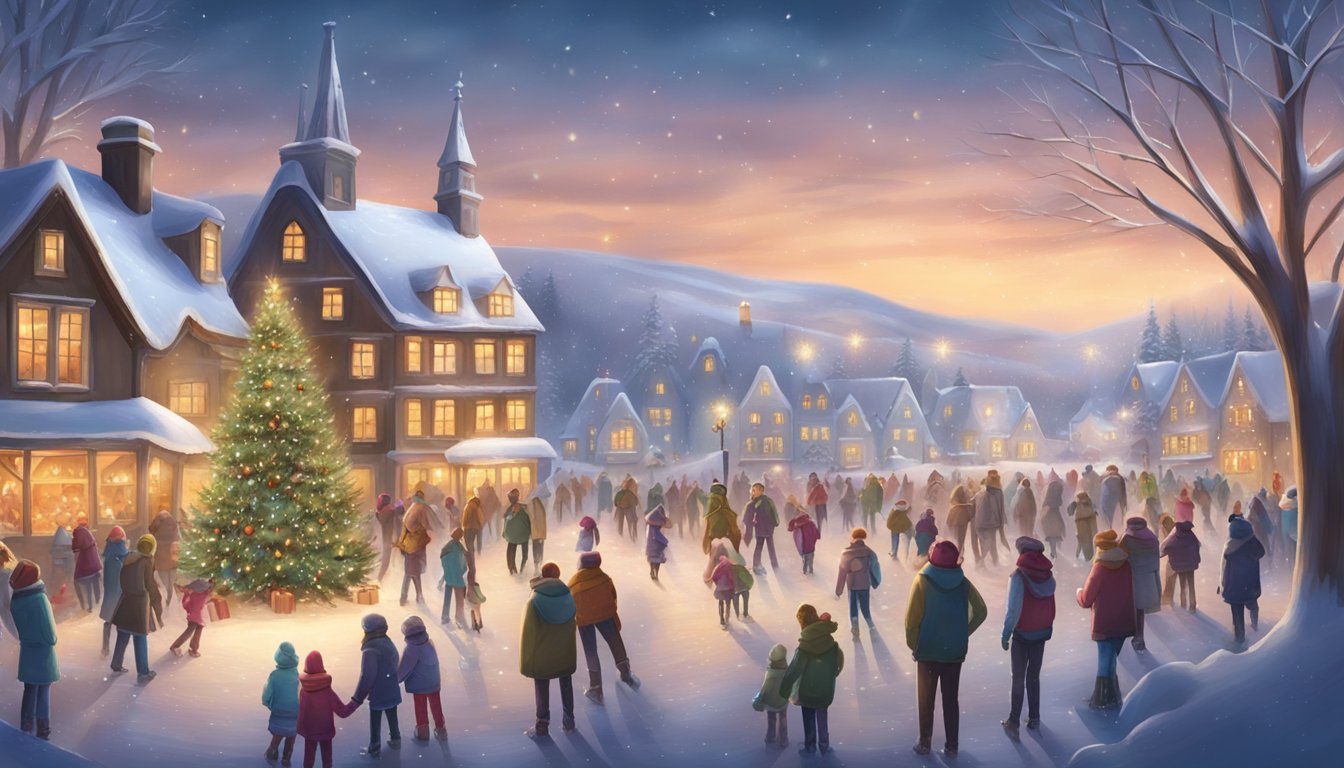
Each region in Canada boasts unique holiday traditions, from French-inspired feasts in Quebec to the festive lights and parades in Ontario, the vibrant markets of Western Canada, and the historical customs of Atlantic Canada.
Christmas in Quebec and French Influences
In Quebec, Christmas is steeped in rich French traditions.
Quebec City transforms into a picturesque winter wonderland reminiscent of old-world France.
Notably, the city hosts a German Christmas Market, where one can indulge in the warmth of German festive treats alongside local specialities like tourtière, a traditional meat pie that encapsulates the French Canadian flavour of the holidays.
Traditions in Ontario and Toronto
Ontario celebrates Christmas with many events, most notably in its capital, Toronto.
The Santa Claus Parade is a significant event, drawing crowds from all over to witness the spectacle of floats and performances.
Nathan Phillips Square glimmers during the Cavalcade of Lights, with a stunning tree lighting ceremony and breathtaking fireworks.
Western Canada’s Festivities
Out west, British Columbia celebrates the season with its spin.
Vancouver is known for its vibrant Christmas Market, a mesh of local and international festive traditions.
Meanwhile, Banff, Alberta, takes full advantage of its snowy landscapes, offering an authentic holiday winter wonderland experience against the backdrop of the magnificent Rockies.
Atlantic Canada’s Holiday Customs
Atlantic Canada holds tightly to its history with traditions like mummering in Nova Scotia, a practice with roots in the province’s past.
The memory of the Halifax Explosion is also commemorated during the season, reflecting on the resilience and community spirit typical of the region’s holiday customs.
Cultural Christmas Traditions
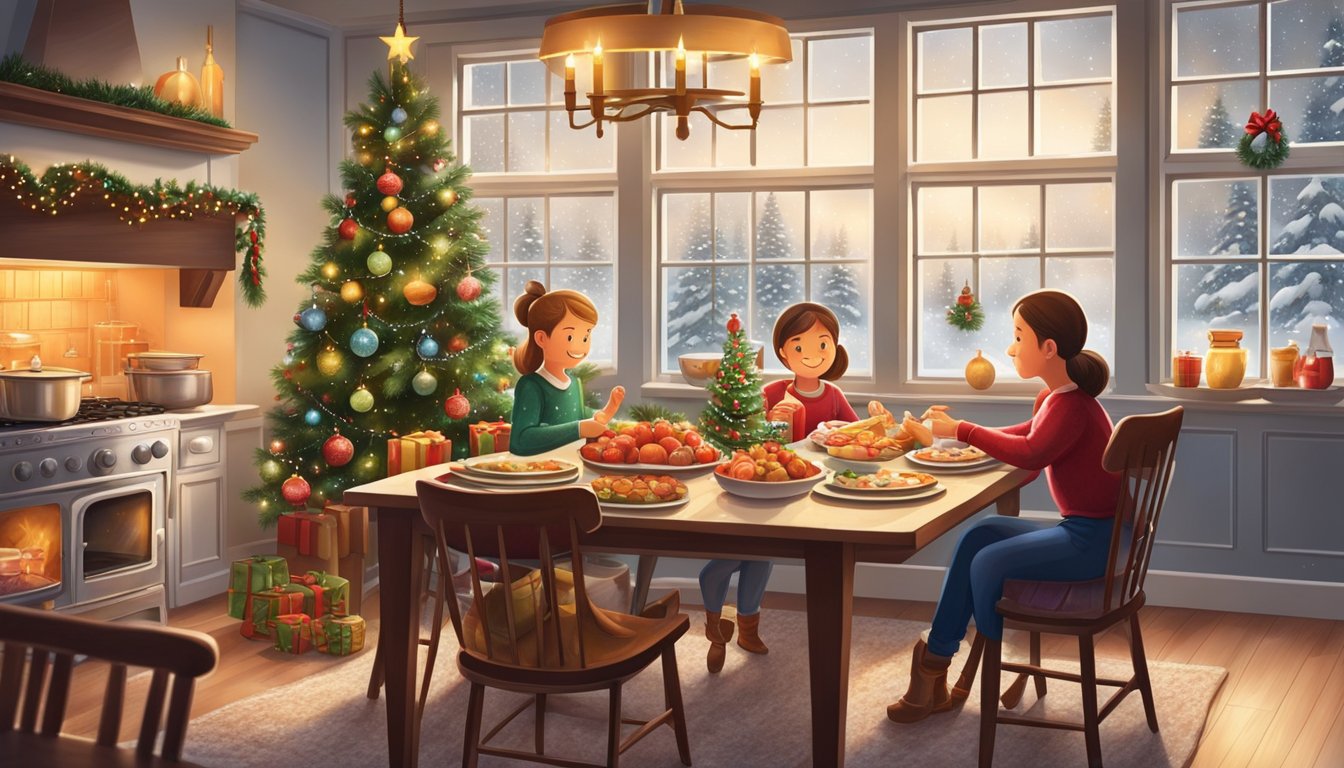
In Canada, Christmas is an assortment of customs with various foods, decorations, and practices influenced by Canada’s multi-ethnic composition.
Canadian Christmas Foods and Feasts
The Christmas feast in Canada is a gastronomical highlight, traditionally featuring a roast turkey or ham, complemented by sides like mashed potatoes and various seasonal vegetables.
Desserts are an essential finale, with offerings such as mincemeat tarts, Christmas plum pudding, and a rich, dense fruitcake.
Regional specialities like tourtière, a French-Canadian meat pie, add local flavour to the celebrations.
Decorations and Tree Traditions
Canadians embrace their winter wonderland by embellishing their homes with twinkling Christmas lights and festive decorations.
Central to the decor is the Christmas tree, often a fir or pine, sourced from local tree farms and adorned with ornaments and lights.
Christmas stockings and handmade crafts often complement the decor, displaying the holiday’s cosy and creative spirit.
Gift-Giving and Exchanging
Gifts are at the heart of Canadian Christmas, with the tradition of exchanging presents fostering a spirit of generosity.
Weeks before the holiday, Christmas cards fly across the country, carrying warm wishes.
On Christmas morning, families and friends gather to exchange thoughtfully selected gifts, often accompanied by the pop of festive Christmas crackers.
Multicultural Influences
Canada’s Christmas is enriched by its multicultural tapestry, integrating traditions from French, British, American, German, Irish, Scottish, Norwegian, and Ukrainian heritages.
In urban centres, holidays like Diwali and Hanukkah are also acknowledged, reflecting the diversity of celebrations Canadians engage in during the festive season.
Activities and Entertainment
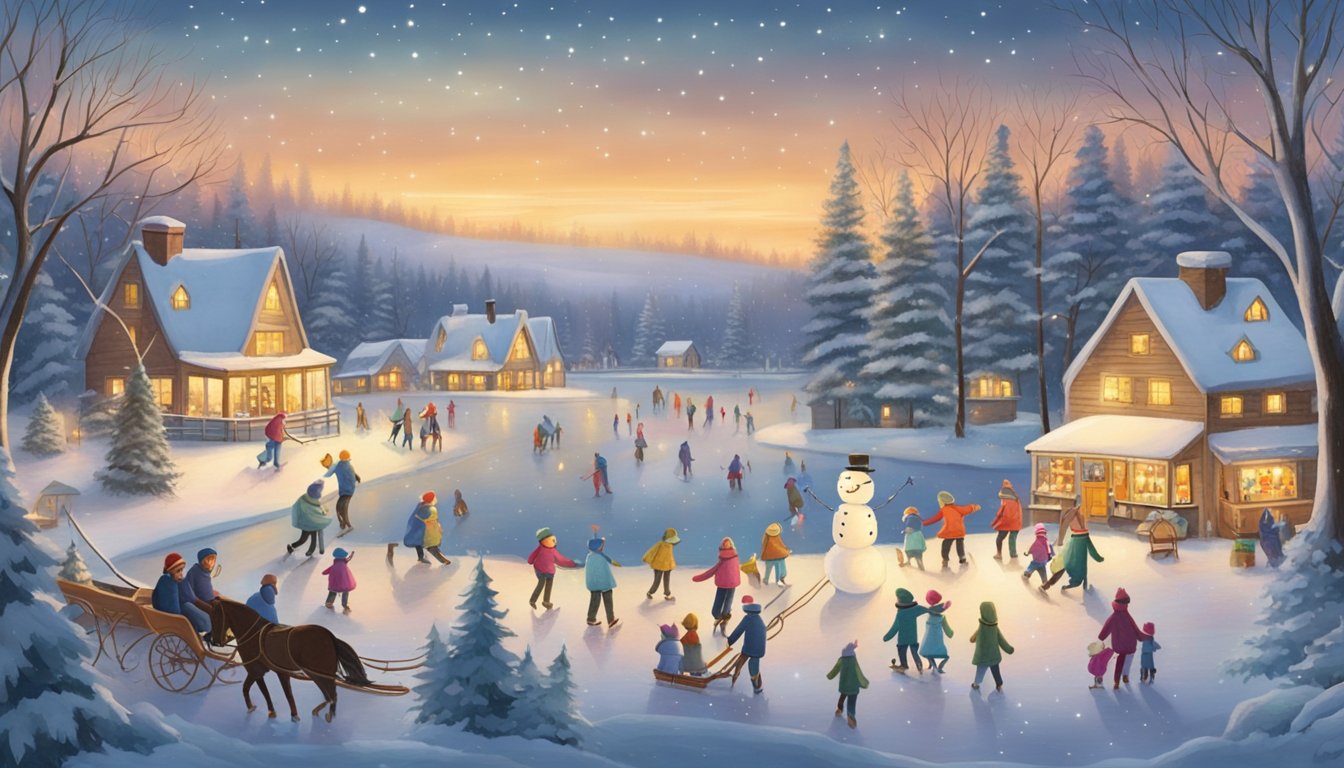
Canada’s Christmas revels in snow-laden festivities, vibrant parades, cosy indoor events, and unique yuletide customs. Each province offers a distinctive blend of activities celebrating the season’s joy amidst the breathtaking Canadian landscapes.
Outdoor Winter Activities
The expanse of white across Canada’s terrain beckons numerous outdoor winter activities.
Visitors can engage in exhilarating skiing and snowboarding in the Rocky Mountains and the Canadian Rockies.
Ice skating is a favourite pastime at iconic locations such as Nathan Phillips Square in Toronto.
For those captivated by the charm of slower-paced adventures, tobogganing and snowshoeing offer a delightful experience.
Moreover, cross-country skiing and dog sledging deliver an authentic Northern touch, often seen in regions like the Yukon, offering glimpses of the Northern Lights during clear nights.
Festivals and Parades
A plethora of winter festivals and parades mark December in Canada.
The Santa Claus Parade is a highlight in cities like Winnipeg, bringing joy to families with elaborately decorated floats and festive music.
The renowned Ice Magic Festival transforms places like Lake Louise into winter wonderlands of intricate ice sculptures.
Many cities, including Ottawa, host German Christmas markets where one can find artisan crafts and traditional treats.
Indoor Celebrations and Events
Indoor celebrations and events provide a warm escape from the cold.
The Cavalcade of Lights in Toronto marks the start of the holiday season with music, performances, and awe-inspiring fireworks.
Historical buildings and churches often hold concerts and recitals, boasting an array of choral and classical music ideal for the holiday atmosphere.
Holiday Season Attractions
Holiday season attractions span from coast to coast.
Niagara Falls dazzles with its Festival of Lights, where the waterfalls are illuminated alongside animated light installations.
In the east, Prince Edward Island’s quaint villages glimmer with decorations, crafting storybook scenes straight out of a Christmas card.
Christmas Eve and Day Customs
The customs of Christmas Eve and Day are deeply cherished.
Many Canadians attend church services on Christmas Eve, while others participate in “Belsnickeling,” a tradition of mild pranking and carolling originating from Germanic folklore.
Christmas Day is typically reserved for family gatherings, feasting, and the exchange of gifts beneath the tree.
Boxing Day and Post-Christmas
The day after Christmas, known as Boxing Day, is a time for shopping deals and holiday sales.
It marks the start of the post-Christmas period, where many Canadians hit the slopes at ski resorts or partake in local sports like hockey, extending the merriments of the Christmas holidays into the New Year.
Iconic Symbols and Characters
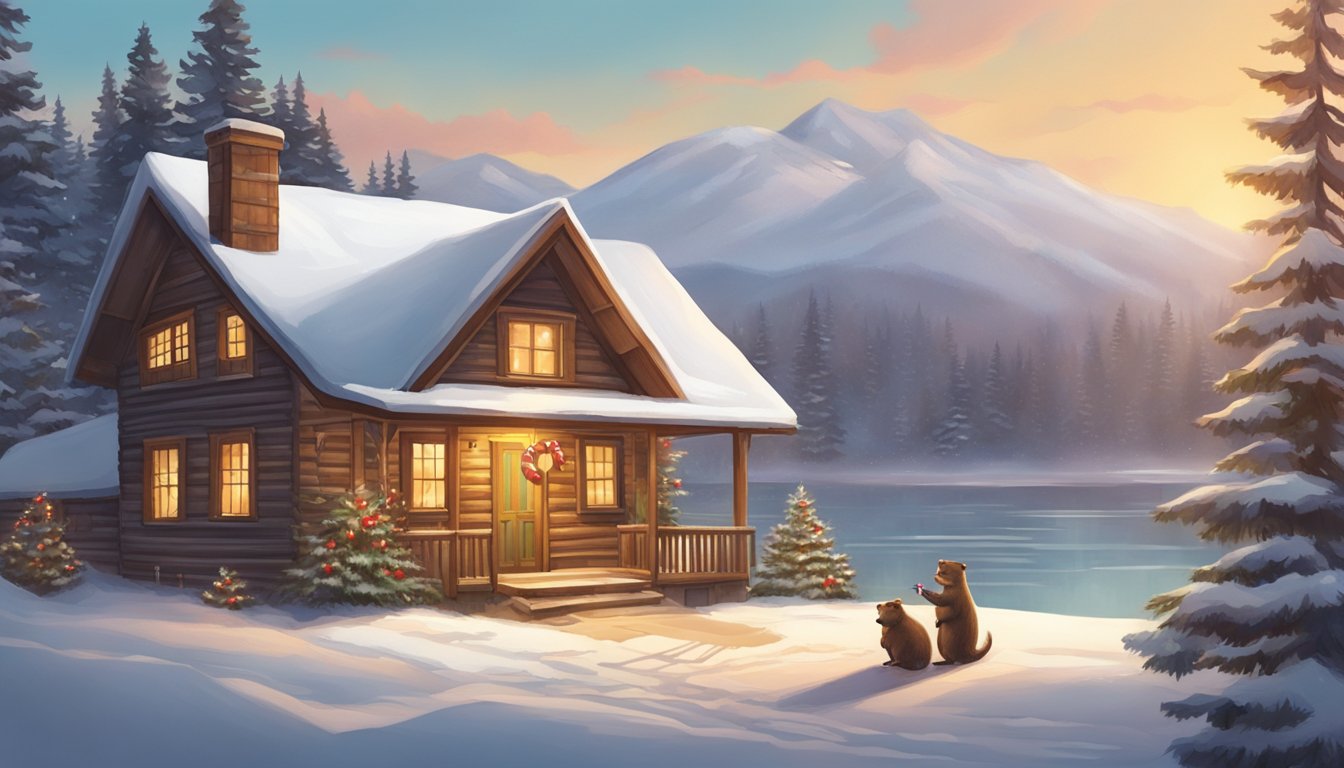
The festive season in Canada is marked by distinctive symbols and characters that encapsulate the spirit and traditions of Christmas. Steeped in a mixture of customs, these elements range from mythical folklore to the natural beauty of the Canadian winter landscape.
Santa Claus and Reindeer Lore
Santa Claus, a pivotal figure in Canadian Christmas celebrations, is deeply rooted in holiday traditions. He embodies the spirit of giving and joy.
Every year, cities across Canada host the Santa Claus Parade, a procession heralding the start of the festive season. The parade features floats, bands, and a grand appearance by Santa himself.
Children in Canada partake in the fun tradition of sending letters to Santa Claus at his mythical address in the North Pole, uniquely recognized by Canada Post’s postal code H0H 0H0.
Reindeer are synonymous with the lore of Santa Claus, often depicted pulling his sleigh through the night sky. These creatures have become symbolic of the magic and wonder of Christmas, inspiring a sense of enchantment among both the young and the old.
Canadian Natural Landscapes and Wildlife
The Canadian Rockies, also known as the Rocky Mountains, stand as silent, frost-covered sentinels during the holiday season. They serve as a stunning backdrop to a quintessentially Canadian Christmas, setting the stage for picturesque holiday celebrations.
In addition to the rugged mountains, the Northern Lights or Aurora Borealis are a breathtaking natural phenomenon often associated with the festive period in northern parts of Canada. These dancing lights in the sky add to the magical ambience of the Christmas season, gracing onlookers with a spectacular light show only nature can provide.
Food and Recipes
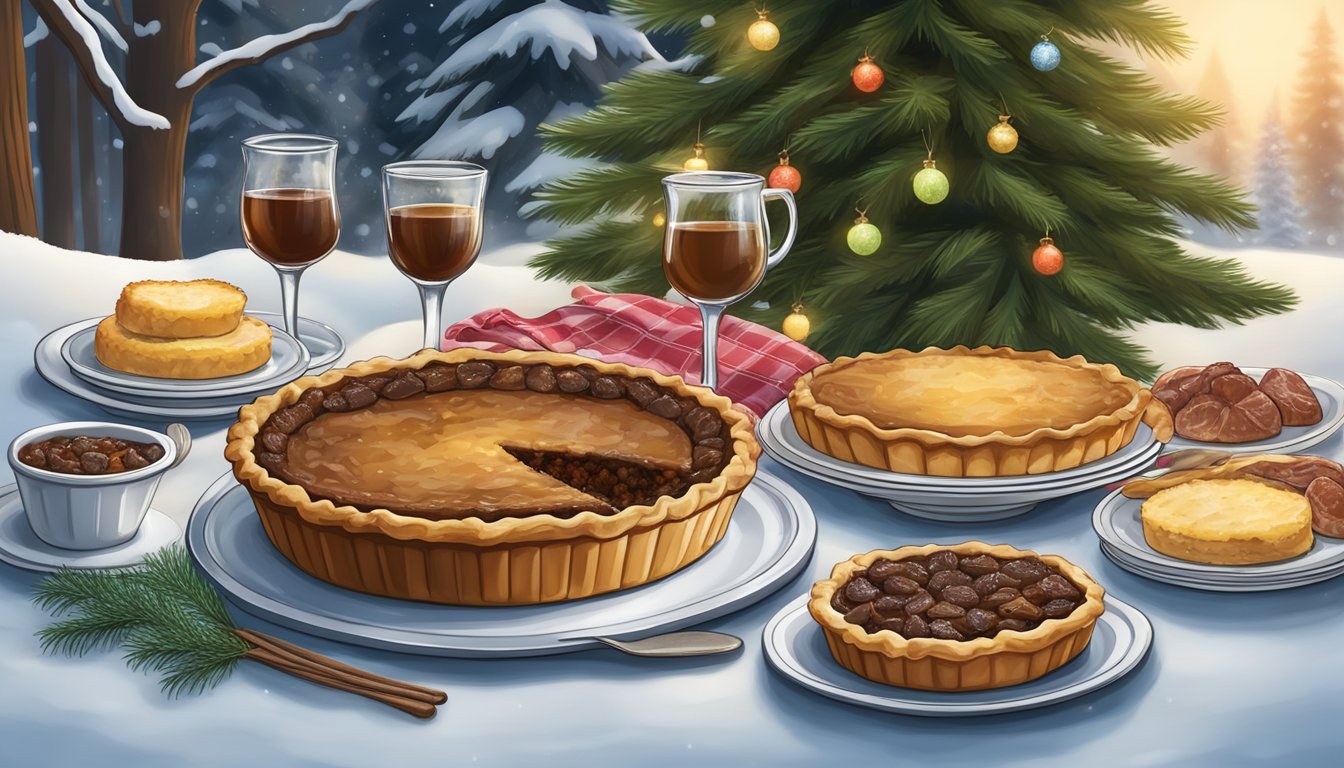
In Canada, Christmas is when family and friends share meals that blend tradition and taste. The food and recipes reflect Canada’s diverse cultural heritage, offering a variety of dishes that warm the heart during the cold winter season.
Traditional Christmas Dinner
The centrepiece of a Canadian Christmas dinner is often a roast turkey. This is typically accompanied by side dishes such as mashed potatoes, gravy, and a selection of vegetables, with Brussels sprouts being notably popular.
Ham is also a typical alternative main course, offering a savoury option to those who might prefer it over turkey.
- Roast Turkey: Seasoned with herbs like sage and thyme and basted with butter.
- Ham: Glazed with a sweet mixture like maple syrup or honey.
- Mashed Potatoes: Creamy and often enriched with butter and cream.
- Gravy: Made from the roasted meats’ dripping, enriched with stock and thickened.
- Vegetables: A mix of local produce, potentially including roasted root vegetables.
Desserts and Sweet Treats
Desserts in Canada feature-rich, sweet flavours that complement the hearty dinner.
- Nanaimo Bars: A no-bake dessert with layers of crumb base, custard-flavored butter icing, and chocolate ganache.
- Butter Tarts: Pastry shells filled with butter, sugar, and egg filling, sometimes with raisins or nuts.
- Mincemeat Tarts: Small pies filled with dried fruits, spices, and sometimes meat.
- Christmas Cake: A dense cake containing dried fruits and nuts, often soaked in spirits.
Eggnog, a creamy beverage made with milk, cream, sugar, whipped eggs, and spices like cinnamon or nutmeg, is a traditional drink enjoyed during the holiday season.
Unique Canadian Christmas Dishes
Canadian Christmas traditions have been influenced by various cultures, which is evident in unique dishes.
- Tourtière: A French Canadian meat pie traditionally made with minced pork and/or veal and beef.
- Gingerbread: Often fashioned into houses or cookies, gingerbread is a staple for sweet Christmas treats.
- Belsnickeling: Although not a food, belsnickeling is a unique Canadian Christmas tradition that involves people dressing up in disguises and going door to door, a festive practice that often involves sharing food and drink.
Decoration Trends and Techniques
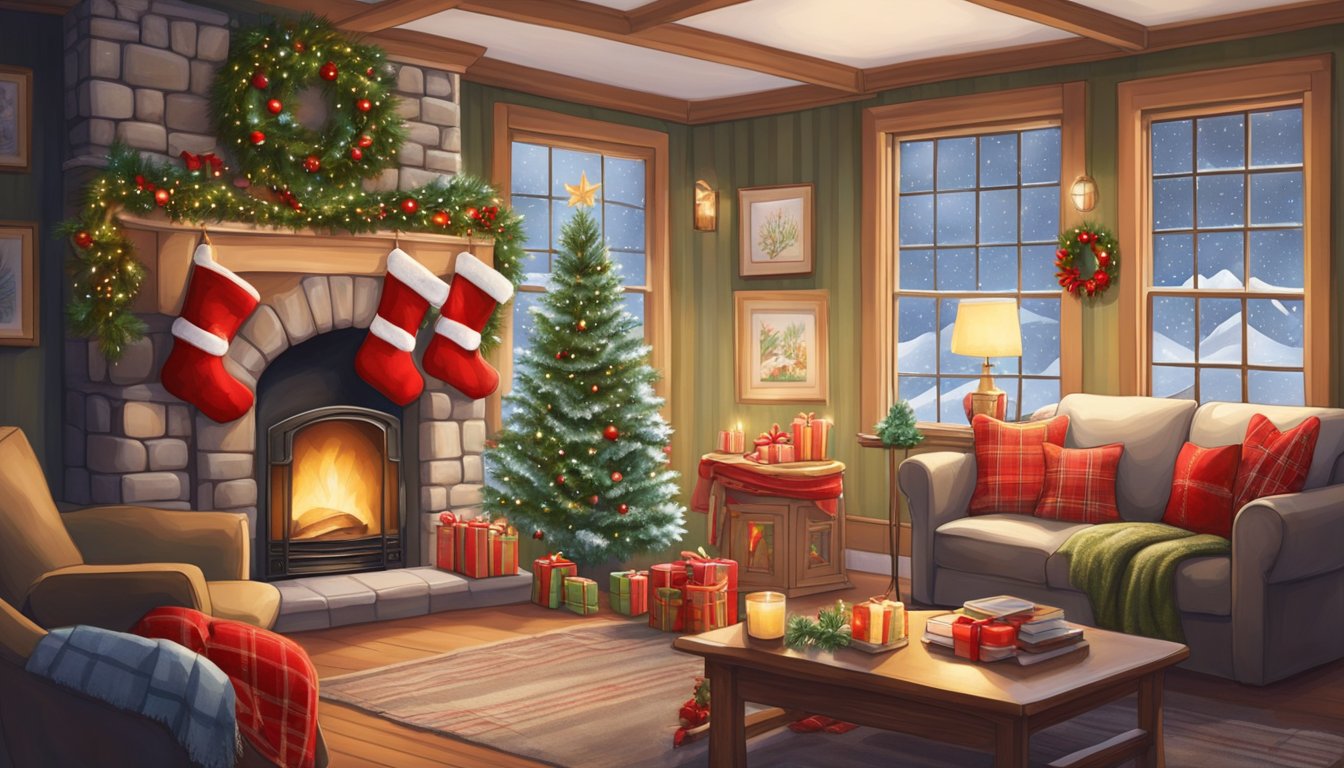
In Canada, Christmas decoration trends fuse traditional elements with contemporary styles, favouring both the nostalgic and the innovative. The emphasis is on creating a festive atmosphere that captures the holiday spirit with a balance of lights, trees, and indoor and outdoor decorations.
Christmas Trees and Ornaments
Varieties of Trees: The traditional choices for Christmas trees in Canada are often fir and pine. Each tree brings a unique fragrance and aesthetic central to the holiday decor.
Ornamentation Styles: Canadians embellish their trees with classic and modern ornaments. Red and gold baubles remain favourites, while handcrafted items add a personal touch. Table settings complement the trees with cohesive colour themes and artistic flair.
Lighting and Display Ideas
Christmas Lights: A staple of the season, Christmas lights range from classic white strand lights to multi-coloured LEDs. Canadians often opt for energy-efficient and durable options to withstand the winter weather.
Display Techniques: Beyond the tree, homeowners incorporate lights into their decor with illuminated wreaths, window displays, and outdoor light sculptures. Strategic placement enhances the architecture and landscape, creating a visually pleasing environment.
Indoor and Outdoor Decorating
Indoor Aesthetics: Indoors, Canadians create warmth with garlands, stockings, and seasonal tableware. Centrepieces often feature candles and greenery; mantles may showcase nativity scenes or collectables.
Outdoor Ensembles: Canadian homes also display decorations that embrace the season’s spirit. From door wreaths to rooftop light installations and yard figures, these embellishments invite joy and celebration.
Frequently Asked Questions
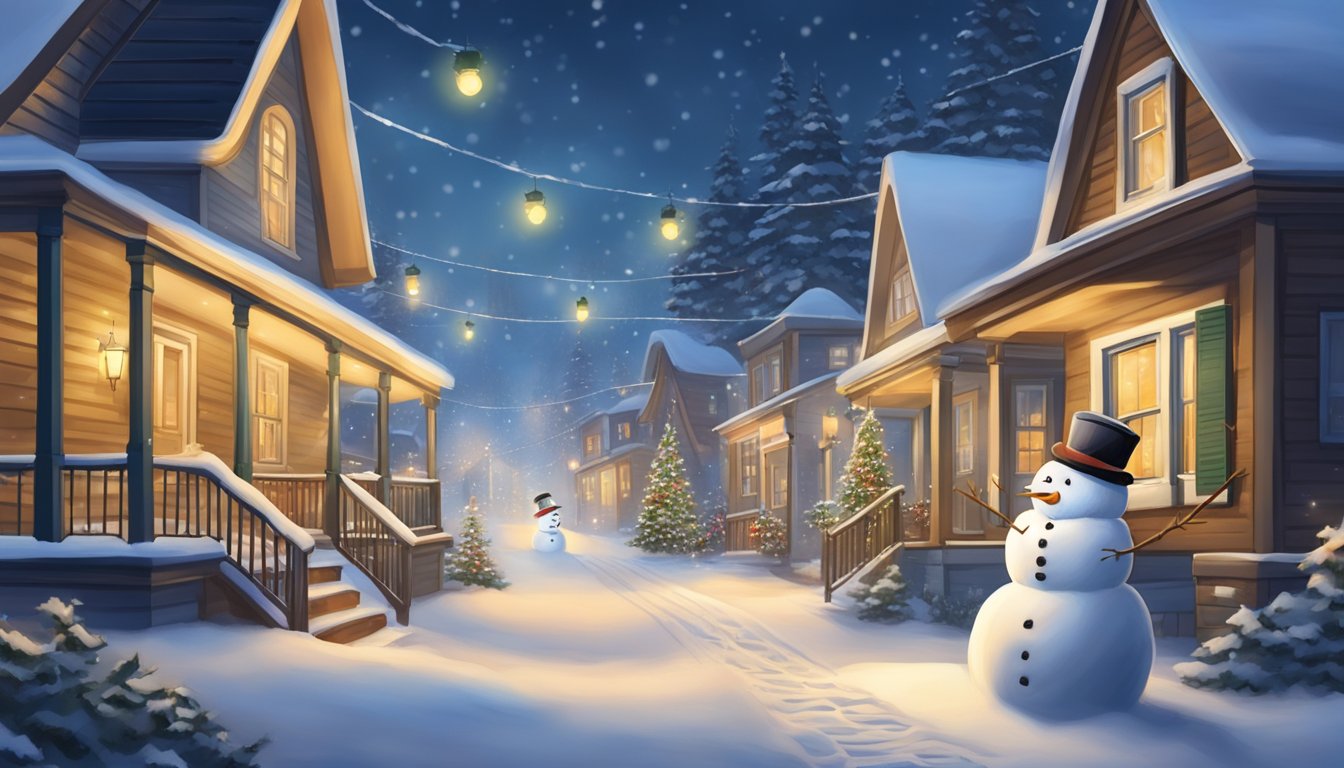
What are some traditional Canadian Christmas foods?
Canadians savour various traditional dishes during Christmas, including tourtière, a French-Canadian meat pie, and butter tarts. The blend of cultures across the nation brings a rich diversity to the Christmas dinner table.
What holiday traditions are unique to Canada?
Unique to Canada, the Sinck Tuck festival celebrated by the Inuit includes a community feast and the exchange of gifts. The Santa Claus Parade in Toronto is another hallmark of Canadian Christmas traditions, attracting large crowds with festive floats and live entertainment.
Where is the best place to spend Christmas in Canada?
The best place to spend Christmas in Canada varies based on preferences, but cities like Quebec City, with its historic charm and festive decor, create a picturesque holiday experience. Toronto’s vibrancy with the Santa Claus Parade makes it a top choice for a dynamic Christmas atmosphere.
Can you describe how Christmas is celebrated in Canada’s various regions?
In Canada’s various regions, Christmas celebrations vary from the Festival of Lights in Vancouver’s VanDernet Gardens to the traditional German markets in Kitchener-Waterloo, Ontario. Each area offers its unique spin on holiday festivities.
How does Christmas in Canada differ from Christmas in the United States?
Christmas in Canada and the United States share many similarities. Still, Canada strongly emphasises Boxing Day, the day after Christmas, as a holiday for shopping and continued celebration. Canadian Christmas also features British traditions, such as Christmas crackers, which are uncommon in the U.S.
What are some interesting historical facts about Christmas in Canada?
Historically, Christmas in Canada reflects the country’s British and French colonial roots. Traditions like the Réveillon dinner stem from French Catholic customs.
The first recorded Christmas in Canada was celebrated in 1604. French explorers in Nova Scotia held a Mass and a modest feast.
